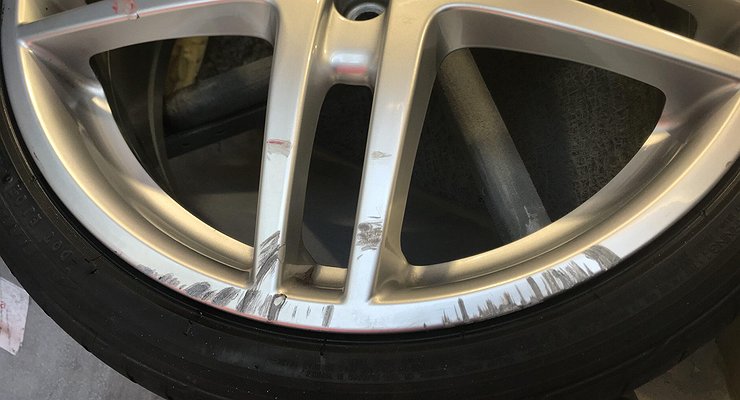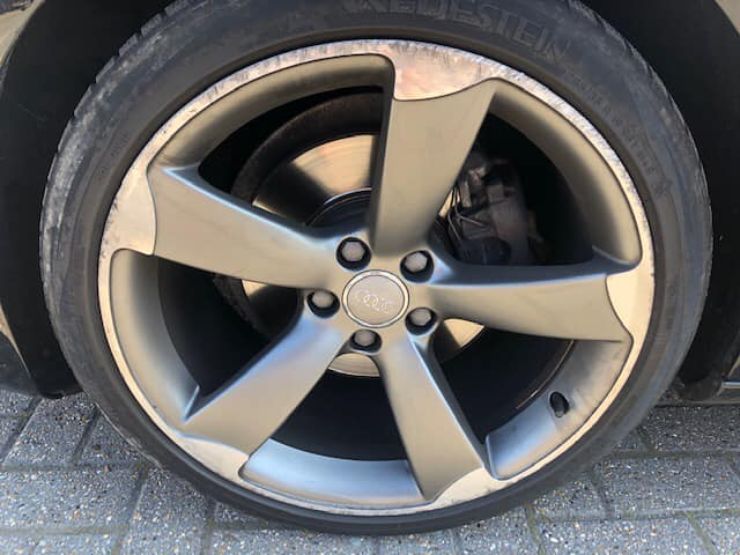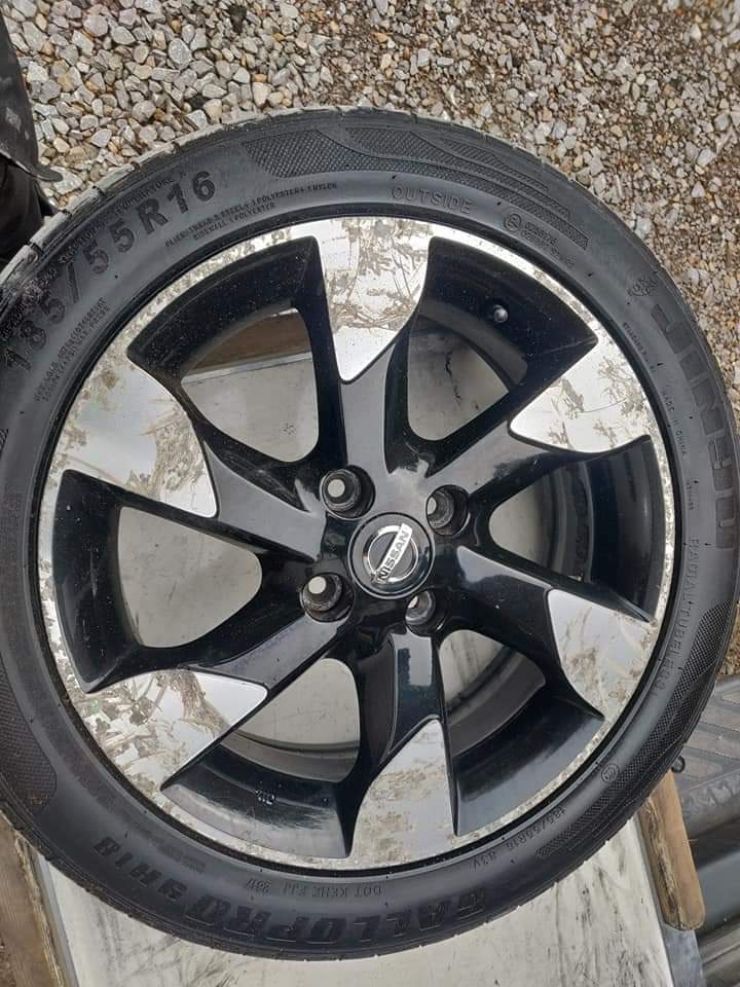How resellers determine the condition of the car based on the rims
- September 24, 2022
- 0
On the Internet there are many tips of varying degrees of usefulness to determine the condition of a used car “by eye”. However, there are few real hacks
On the Internet there are many tips of varying degrees of usefulness to determine the condition of a used car “by eye”. However, there are few real hacks

To fully draw conclusions about a car based on the condition of alloy wheels at the level of a professional “buy-up”, an ordinary motorist will have to find out in advance: what kind of wheels were once “native ” to the car of the model and year of manufacture you are interested in. From old photos in catalogs and from illustrations of journalistic test drives, this is quite easy to do. The most important thing is to have an image in your visual memory or in the memory of your smartphone of the “correct to make discs. Their pattern, color, shape.
So you’re looking at a used car. You can see that the drives are “native”. This is the ideal option. Most importantly, they don’t get “killed”, but more on that below. “Live” original discs indicate that the owner used the car very carefully and carefully. That allows us to hope for a pretty decent technical condition of the machine. If the vehicle has wheels of approximately the same class as the “original”, and you are sure the owner does not have a second set of wheels, this is not a good sign. It may very well be that the owner of the car once had to get rid of “native casting”. For example, due to the fact that one of the wheels is broken in a road pothole or an accident. Both options are reason to take a closer look at the condition of the chassis and body of the car.
Buying a car with frankly cheaper rims than the original or even with distinctly non-native steel wheels is one more reason to be even more wary. First, because it can be a hint of a past accident. And second, the seller may have replaced expensive original drives with cheap ones to later sell them separately for additional profit. Someone with such an attitude can, on exactly the same principle, “prepare a car for sale” by selling the catalytic converter, replacing “native” headlights and mirrors with cheap Chinese counterparts, and things like that.
Of course, it may turn out that in front of you there is just a stingy person in life, who initially bought a car in the minimum configuration on steel wheels. But this means that he could save well (where it is not needed) both on the maintenance of the machine and on its maintenance. All of this is an opportunity to take a more biased look at the condition of the vehicle in front of you. In the event that the drives are “native”, you should take a closer look at their condition. If they are, as they say, “ideally”, there are no questions. It doesn’t matter if one of them has a dent from an old hit on a speed bump. It happens. Some drivers aren’t even aware of their existence until a tire worker points it out.
But if there are more than one such dent, and even more so when a welding trace is suddenly found on the metal of the disc, this is a problem. The owner of the car obviously likes to drive on bad roads and does not protect the car. Consequently, the general technical condition is likely to be deplorable, even if the bodywork is gleaming with gloss and the interior is perfectly clean after dry cleaning. A few chips on all the discs of a car that has been driving in the city for a long time is quite normal. But if the wheels, as they say, are heavily “beaten” – that is, all four and more than once each – this means that at least the suspension of the car should be checked with particular care. Also, don’t be surprised if it turns out that numerous repair marks are found on the body – small and not very much. It is not surprising – when the driver does not feel the dimensions of his own car well.
Well, if for any reason the discs have circular scratches, you know: the car definitely skidded in the mud or sand. Such scratches are caused by contact with stones when the wheel turns, buried in the ground. Here it is necessary to fully inspect not only the suspension, but also the bumpers – for their cracks in the past. Be sure to check out the broadcast! Once overheated during skidding, the gearbox guarantees the owner big surprises in the future. And also check the anthers and the performance of the drives, brakes, as well as the pipes and hoses in the lower part of the engine compartment. In short, all systems and components that normally suffer from crawling machines “on the belly”.


To fully draw conclusions about a car based on the condition of alloy wheels at the level of a professional “buy-up”, an ordinary motorist will have to find out in advance: what kind of wheels were once “native ” to the car of the model and year of manufacture you are interested in. From old photos in catalogs and from illustrations of journalistic test drives, this is quite easy to do. The main thing is to have in your visual memory or in the memory of your smartphone an image of the “correct to make discs. Their pattern, color, shape.
So you’re looking at a used car. You can see that the drives are “native”. This is the ideal option. Most importantly, they don’t get “killed”, but more on that below. “Live” original discs indicate that the owner used the car very carefully and carefully. That allows us to hope for a pretty decent technical condition of the machine. If the vehicle has wheels of approximately the same class as the “original”, and you are sure the owner does not have a second set of wheels, this is not a good sign. It may very well be that the owner of the car once had to get rid of “native casting”. For example, due to the fact that one of the wheels is broken in a road pothole or an accident. Both options are reason to take a closer look at the condition of the chassis and body of the car.
Buying a car with frankly cheaper rims than the original or even with distinctly non-native steel wheels is one more reason to be even more wary. First, because it can be a hint of a past accident. And second, the seller may have replaced expensive original drives with cheap ones to later sell them separately for additional profit. Someone with such an attitude can, on exactly the same principle, “prepare a car for sale” by selling the catalytic converter, replacing “native” headlights and mirrors with cheap Chinese counterparts, and things like that.
Of course, it may turn out that in front of you there is just a stingy person in life, who initially bought a car in the minimum configuration on steel wheels. But this means that he could save well (where it is not needed) both on the maintenance of the machine and on its maintenance. All of this is an opportunity to take a more biased look at the condition of the vehicle in front of you. In the event that the drives are “native”, you should take a closer look at their condition. If they are, as they say, “ideally”, there are no questions. It doesn’t matter if one of them has a dent from an old hit on a speed bump. It happens. Some drivers aren’t even aware of their existence until a tire worker points it out.
But if there are more than one such dent, and even more so when a welding trace is suddenly found on the metal of the disc, this is a problem. The owner of the car obviously likes to drive on bad roads and does not protect the car. Consequently, the general technical condition is likely to be deplorable, even if the bodywork is gleaming with gloss and the interior is perfectly clean after dry cleaning. A few chips on all the discs of a car that has been driving in the city for a long time is quite normal. But if the wheels, as they say, are heavily “beaten” – that is, all four and more than once each – this means that at least the suspension of the car should be checked with particular care. Also, don’t be surprised if it turns out that numerous repair marks are found on the body – small and not very much. It is not surprising – when the driver does not feel the dimensions of his own car well.
Well, if for any reason the discs have circular scratches, you know: the car definitely skidded in the mud or sand. Such scratches are caused by contact with stones when the wheel turns, buried in the ground. Here it is necessary to fully inspect not only the suspension, but also the bumpers – for their cracks in the past. Be sure to check out the broadcast! Once overheated during skidding, the gearbox guarantees the owner big surprises in the future. And also check the anthers and the performance of the drives, brakes, as well as the pipes and hoses in the lower part of the engine compartment. In short, all systems and components that normally suffer from crawling machines “on the belly”.
Source: Avto Vzglyad
I’m Sandra Torres, a passionate journalist and content creator. My specialty lies in covering the latest gadgets, trends and tech news for Div Bracket. With over 5 years of experience as a professional writer, I have built up an impressive portfolio of published works that showcase my expertise in this field.